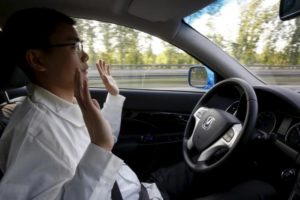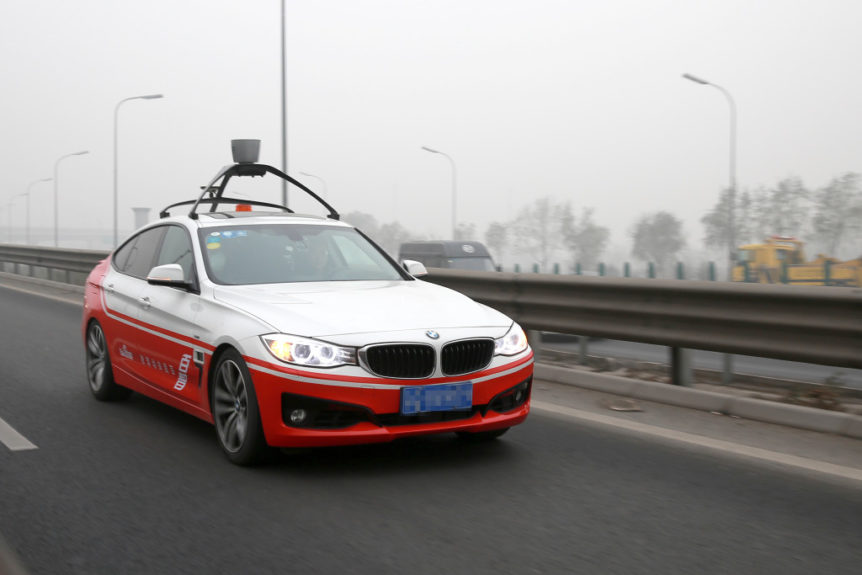DRIVING IN CHINA sucks. Getting anywhere in a city like Beijing means slogging through colossal traffic jams and chaotic, bewildering intersections. Crashes kill 500 people daily, and everyone views the rules of the road as advisory at best. “Many drivers and pedestrians think that traffic signals are just for reference,” says Jing Wang.
He’s teasing—kinda. But Wang is entirely serious when he says Beijing and Shanghai are a perfect laboratory for self-driving cars. He leads the autonomous vehicles program at Baidu (China’s version of Google), and he’s confident China will be the first country to embrace autonomy.
That’s entirely possible, but Chinese cities don’t seem like a great place to start. Self-driving cars work best in an environment of limited variables where everyone follows set rules. You’d think cities where traffic jams span 50 lanes and intersections resemble parking lots would be a horrible proving ground. So far, most of the automakers and tech firms around the world racing to develop this tech have tested it on highways or quiet suburbs, although Google recently sent its cars into Austin, Texas.
Google’s cars have racked up more than 1.5 million miles and caused just one crash since the program started in 2009, and Google expects to see customers in cars by 2020. Wang is betting that Baidu beats them. That’s not crazy, says Larry Burns, who once led R&D at General Motors and advises automakers on such things. He sees robo-cars rolling out in some parts of the US in two or three years. “Could China move faster than that? Absolutely,” he says.
Baidu launched its program three and a half years ago, and announced in December that a prototype drove 18.6 miles through Beijing. The company  refuses to reveal the scope of its program, nor will it say how many miles its cars have driven or how many crashes they’ve had. Despite its relatively late start, Baidu plans to have fully autonomous cars in commercial applications by 2019 and ramp up to mass production and widespread distribution by 2021.
refuses to reveal the scope of its program, nor will it say how many miles its cars have driven or how many crashes they’ve had. Despite its relatively late start, Baidu plans to have fully autonomous cars in commercial applications by 2019 and ramp up to mass production and widespread distribution by 2021.
Of course, building the cars is easy once you’ve mastered the underlying technology. But programming machines to navigate public roads is hard enough when human drivers bend rules by speeding, rolling through stop signs and doing all the other things human drivers do. How is a robo-car to cope when almost everyone ignores the rules?
“It’s all about artificial intelligence” says Wang. Baidu puts deep learning and AI at the center of everything it does, an investment the company made just as it started contemplating autonomous cars, he says. The same technology that’s learning to spot malware is learning to spot pedestrians. The US National Highway Traffic Safety Administration rates vehicle autonomy from level zero (bag-of-flesh does everything) to level four (bag-of-flesh is obsolete). Given the challenge of China’s traffic, Baidu coined a new term for its system: Level 4+.
Of course, handling China’s roads and being welcome on China’s roads are two different things. Wang is confident that the country is the right place to debut autonomous tech. He cites three factors in its favor: a population prone to embracing new tech, a vast auto industry, and a national appetite for big, bold projects.
Far fewer people own cars in China than in the US, and high adoption rates for new technologies indicate the Chinese would embrace cars without drivers, Wang says. A 2015 World Economic Forum study backs this up. It found that 75 percent of Chinese respondents are inclined to ride in an autonomous taxi, compared to 52 percent of Americans.
Mark Schlarbaum
